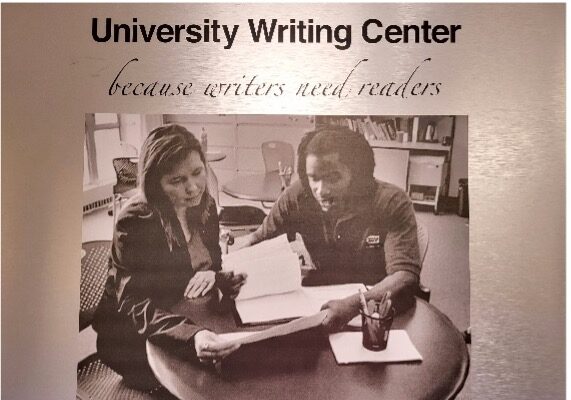by Ken Erny, Student Consultant, University Writing Center
Writing’s hard, no doubt about it. So often, we have all these fabulous ideas rocketing around in our heads. We know what we’re thinking; we recognize our own brilliance. Yet, trying to externalize these thoughts onto the written page – to effectively communicate our ideas to others – proves a different story. Throw in APA formatting, in-text citations, assignment guidelines, deadlines and thesis statements, academic rigor in general… and well, brilliance can find itself muddled, to say the least.
I’d like to contend that it is precisely through this difficult process of writing that we, as learners, find the means to sort out the muddle. And I’m not the only one. How about a quick summertime dip into the pool of scholarly assessment regarding human cognitive and communicative processes?
Join me in taking a bite out of this meaty sentence: “If thought is internalized public and social talk, then writing is internalized talk made public and social again” (Bruffee 91).
OK, hold on… What?
This, if I may inform, is the crux of sociocultural theory, and it is at the heart of the process of inquiry through which effective writing originates. Let’s go on. If we think about language, we realize that the spoken word comes to human beings quite naturally. You might say we are hard wired towards speech. Not so with writing. To paraphrase renowned linguist Geoffrey Sampson, writing is a system of permanent visible marks representing the sounds of human speech. Writing must be taught to be learned; it does not just come to us. We don’t just pick it up as children pick up speech.
In one of my courses, Language and the Study of Writing, we learned that writing is a technology that has forever changed the course of human history. Another respected linguist, Florian Coulmas, considers “Writing is the single most important sign system ever invented on our planet” (3). It may take a little time to learn the technology of writing, to learn to make visible marks to represent the sounds of speech. But it certainly doesn’t take a lifetime. What does take a lifetime, however, is the pursuit of William Zinsser’s idea that, “writing is thinking on paper.” I like that… “thinking on paper.” Those who hunger to put their thoughts into writing embark on a life’s journey. And so, we might ask ourselves: “If thought is social speech made private, and if writing is private speech made public, how does this understanding impact the way we employ this awesome technology of writing?”
IUPUI’s Fred DiCamilla, along with co-author James Lantolf, address this topic of private speech and writing by affirming that the “link between social and mental worlds” originates through language (2). Let me see if I can build their argument in my own words. We are asked to remember how, when children, we quite often spoke to ourselves out loud. Likely we’ve all heard toddlers, engaged in their own worlds, prattling away to themselves. As adolescents we learn to curb this tendency to think out loud, especially when others might overhear. However, this talking out loud is indicative of the way we think. These children are not talking for the purpose of communicating with others; they are using speech for their own purposes. J. V. Wertsch, DiCamilla and Lantolf make the following statement: “That is, private speech is directed by the self as a speaker, to the self as a listener for the purpose of organizing and directing the strategies (e.g., attention, planning, thinking, remembering, evaluating) entailed in mental activity” (2). What we as writers want to do is get this private speech back out into the open.
And so, we write. We think on paper. And unlike the externalized private speech of children, our academic goal in externalizing our cognitive processes through writing is communication.
OK. That’s enough for a summer day, and for those who waded through, here’s a couple quotes guaranteed to lighten the mood:
“It ain’t whatcha write, it’s the way atcha write it.”
—Jack Kerouac, WD
“Let the world burn through you. Throw the prism light, white hot, on paper.”
—Ray Bradbury, WD
“We are all apprentices in a craft where no one ever becomes a master.”
—Ernest Hemingway
“To defend what you’ve written is a sign that you are alive.”
—William Zinsser, WD
Works Cited
Bruffee, Kenneth A. “Peer Tutoring and the “Conversation of Mankind”” Writing Centers: Theory and Administration. NCTE, 1984. 87-98. Print.
Coulmas, Florian. The Writing Systems of the World. Oxford, UK: B. Blackwell, 1989. Web. 08 Dec 3013.
DiCamilla, Fred, and James Lantolf. “The Linguistic Analysis of Private Writing.” Language Sciences N3/4 V.16 (1994): 347-69. Print.

